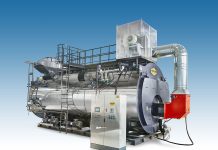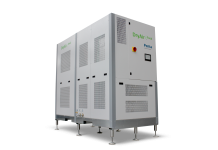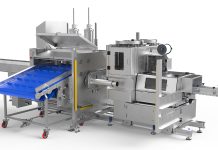The internal gas pressure (steam, carbon dioxide) causes an expansion and increase in volume of the bean. The loss in weight and the increase in volume produce a fast reduction of the consistency of coffee beans and an increase of their porosity. After roasting, the beans loose their hardness, becoming fragile and brittle, with important refl exes for grinding purposes. The uniformity of ground coffee, in fact, depends from the brittleness of roasted coffee, which is related to the humidity and the roasting level.
Studies conducted at Torrefazione Musetti in cooperation with the Institute of Oenology and Food Engineering of the University Cattolica del Sacro Cuore of Piacenza concerned the effect of roasting parameters on the variables that infl uence the colour of coffee.
Materials and methods
As known, spectrophotometers or colorimeters equipped with the relevant processing software permit the numerical defi nition of the colour of ground coffee, thus enabling also the monitoring of its evolution during the roasting phase. This colour is expressed by three parameters, called “trichromatic coordinates” which, in the colorimetric space CIELab, are:
L* = brightness or gloss or light to dark colour intensity
a* = red-colour fraction (positive sign) or green-colour
fraction (negative sign)
b* = yellow-colour fraction (positive sign or blue-colour
fraction (negative sign)
They defi ne a colour solid as shown in Figure 1.
The variables mentioned above allow the calculation of two
important colour attributes:
C* = chroma or saturation, i.e. level of sharpness
 The described parameters can be used to assign a specific number to the colour of a sample of roasted and ground coffee, which can be particularly useful also for analysing induced colour variations of roasted ground coffee: from the use of different raw materials (blends), to the implementation of different temperature ranges during the roasting, and the use of roasting machines with diversified heating methods. To this purpose, the colorimeter Chroma Meter CR-300 Minolta (Figure 2) has been used, and the above mentioned variables have been measured on different coffee blends, roasted at different temperatures with different methods (Table 1). In the roasting machines marked 2 and 3, green coffee is introduced into the rotating drum of the machine, where it is roasted by means of three air burners. When the desired temperature is reached (see Table 1), the flames turn out one after the other, and coffee is unloaded into a pan for cooling. The roasting unit no. 1, of larger size, features a different heat-transmission system with just one air burner. The experimental tests for evaluating the different colours of roasted coffee in relation with the blend, the temperature, and the roasting method, included a total of individual 250 tests. All data have been statistically processed with SPSS software.
The described parameters can be used to assign a specific number to the colour of a sample of roasted and ground coffee, which can be particularly useful also for analysing induced colour variations of roasted ground coffee: from the use of different raw materials (blends), to the implementation of different temperature ranges during the roasting, and the use of roasting machines with diversified heating methods. To this purpose, the colorimeter Chroma Meter CR-300 Minolta (Figure 2) has been used, and the above mentioned variables have been measured on different coffee blends, roasted at different temperatures with different methods (Table 1). In the roasting machines marked 2 and 3, green coffee is introduced into the rotating drum of the machine, where it is roasted by means of three air burners. When the desired temperature is reached (see Table 1), the flames turn out one after the other, and coffee is unloaded into a pan for cooling. The roasting unit no. 1, of larger size, features a different heat-transmission system with just one air burner. The experimental tests for evaluating the different colours of roasted coffee in relation with the blend, the temperature, and the roasting method, included a total of individual 250 tests. All data have been statistically processed with SPSS software.





